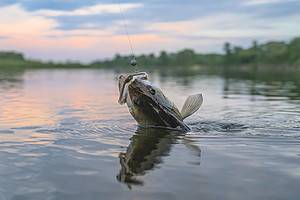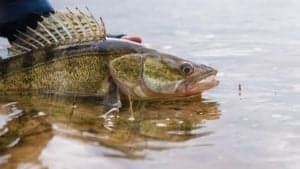The walleye is a popular and prized game fish among anglers for several reasons. It’s a challenging fish to catch for many, and it can grow exceptionally large. Additionally, it’s said to be a delicious catch, making it both impressive to look at and a healthy, tasty meal. But what was the largest walleye ever caught worldwide? What should you know about this incredible yet uniquely controversial record? Read on to learn all about the walleye, how big they get, and the current all-tackle world record.
Get to Know the Walleye: Background and Fun Facts
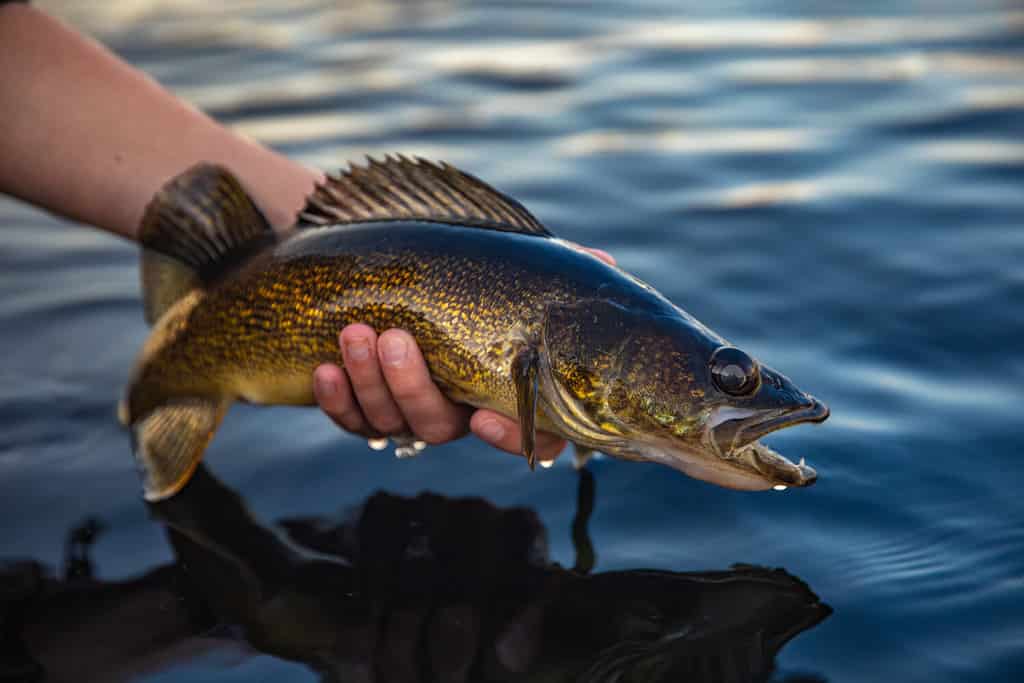
The walleye’s distinctive olive green and gold body color is visible here, along with its large eyes, wide mouth, and exceptionally sharp teeth.
©Harlan Schwartz/Shutterstock.com
Though to most anglers, it’s known as the walleye, the fish Sander vitreus goes by a few common names (yellow pike, yellow pickerel, or yellow pikeperch), depending on where you live. Notably, it is also sometimes referred to specifically as the yellow walleye. This differentiates it from a particular color morph of the species that used to live in eastern Canada’s waters but is now likely extinct.
But the fish’s most common name comes from the species’ shimmering iridescent eyes. This is due to a thin layer of tissue in the eyes, the tapetum lucidum. This helps reflect light and significantly aids the animal’s night vision. It’s a helpful adaptation since the fish is primarily nocturnal and usually feeds in rough, turbid waters.
Aside from its uniquely glowing eyes, the walleye can be recognized by its mostly olive green and golden coloration. This gradient-like pattern fades to an off-white color on the belly. Its overall body color is usually broken up along the back by large, dark brown saddle-like markings. Walleyes also have pretty large mouths for their size, equipped with 30 to 40 razor-sharp teeth.
The walleye is mainly native to the Upper Midwest and prefers cool water. However, it can be found in varying depths. Notably, the species is also Minnesota’s state fish. Thanks to its exceptional eyesight, it often travels to deeper, rougher waters to have a significant advantage over its prey. Many anglers affectionately refer to this wild, deep water as “walleye chop.”
How Big Can Walleye Get?
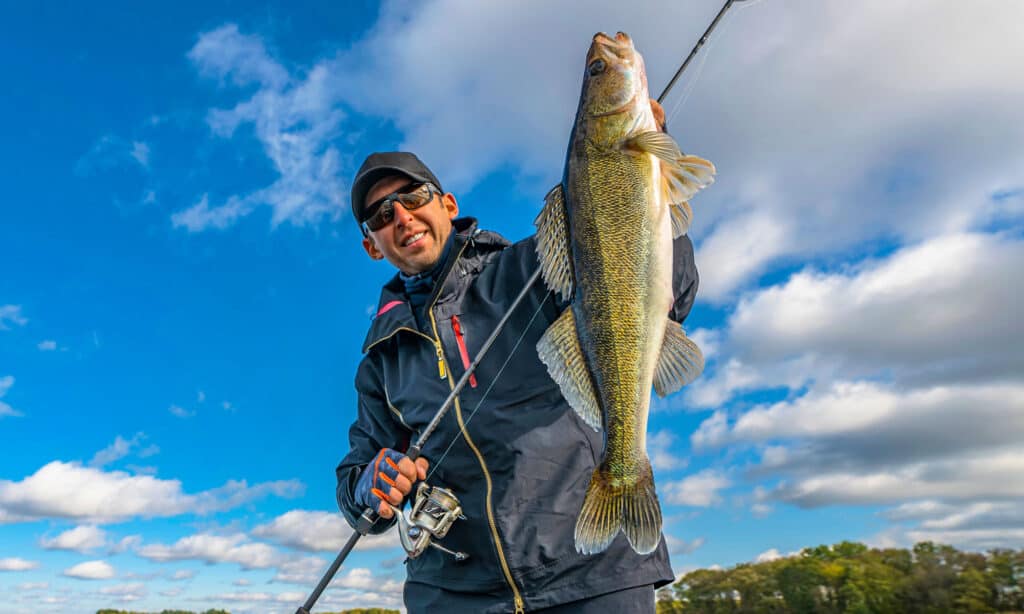
Walleye can grow to be exceptionally large. Many specimens exceed 30 inches in length!
©FedBul/Shutterstock.com
As mentioned earlier, one of the main reasons why walleye are so prized amongst anglers is their exceptionally large size. On average, they grow to be around 30 inches long when fully mature. However, it is common for specimens to exceed this length. As far as their average weight goes, they typically grow to be around 20 pounds. Like their average length, though, this measurement varies between individuals and can commonly exceed 25 pounds.
Notably, walleye reach sexual maturity and usually reproduce at around three to four years of age. They grow very quickly during their first few years of life. But it’s typical for them to continue growing well into adulthood. Many do not reach their full size until they are close to 10 years old! They can live for a few decades, with the oldest recorded specimen going 29 years old.
Interestingly, walleye in Canada grow larger than in the United States, with specimens growing larger the further north they reside. This is likely due to the species being more heavily fished in the US compared to the cooler, more remote reaches of northern Canada. Additionally, walleye in the US generally have shorter lifespans, with most being fished by the age of five to six.
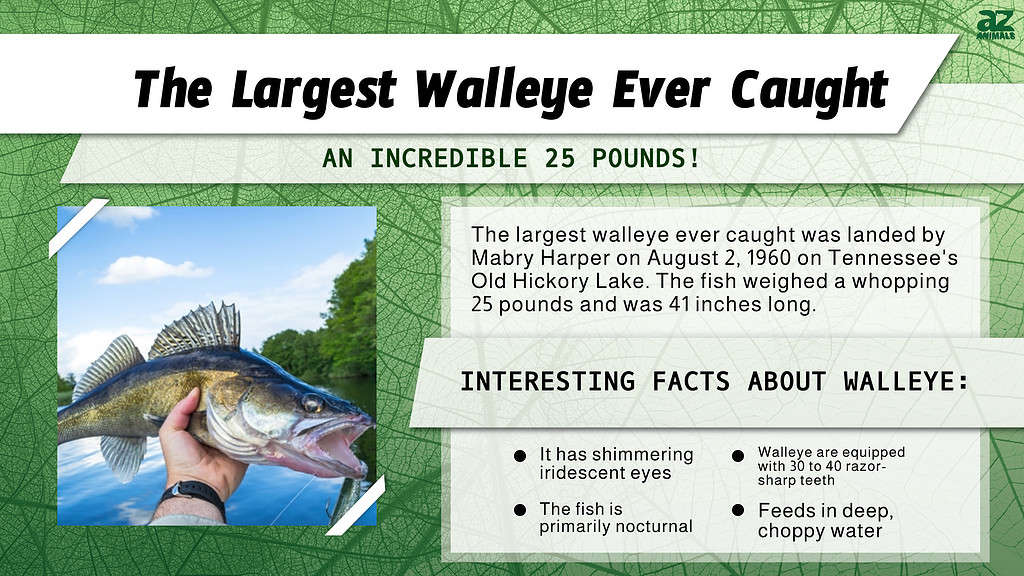
What is the Largest Walleye Ever Caught?
The record for the largest walleye ever caught has a fascinating history. According to the International Game Fish Association, the all-tackle world record dates back to August 2nd, 1960. Mabry Harper, the angler responsible for the catch, caught the incredible 25-pound specimen at central Tennessee’s Old Hickory Lake. The lake in question is around 25 miles north of Nashville along the Cumberland River.
Interestingly, though, the record has been questioned by many anglers, with the IGFA even temporarily revoking the title for a short time to investigate it further. Eventually, the IGFA voted to reinstate the title after the catch was subject to heavy scrutiny, mainly the original photos of the catch from the time. Some anglers suggested the fish couldn’t have been more than 12 pounds, with others noting it was odd that Mabry didn’t mount his catch.
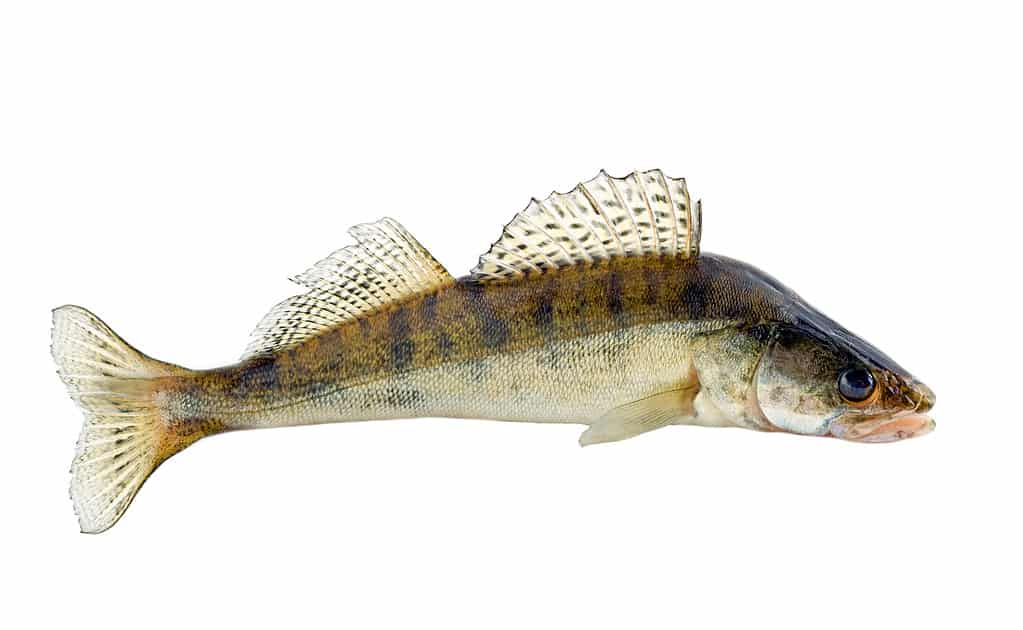
Although most walleye in the United States tend to be much smaller than their potential maximum size, the all-tackle world record was caught in Tennessee.
©iStock.com/Vladyslav Danilin
However, after a detailed investigation into the matter, the IGFA found the size of the fish to be correct. Newly discovered and submitted evidence, along with a few additional photos of the catch, helped them determine the fish was a whopping 25 pounds and 41 inches long. Similarly, Mabry likely didn’t mount the catch simply because he probably ate it, with many anglers of the period catching fish primarily for food rather than sport alone.
The world’s largest walleye remains an astonishing catch despite the initial and continuing controversy surrounding it today.
The photo featured at the top of this post is © iStock.com/Vladyslav Danilin
Thank you for reading! Have some feedback for us? Contact the AZ Animals editorial team.



